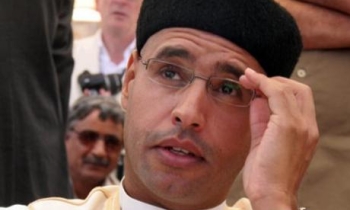In a recent e-mail chat about the future of their business, several young New York Times reporters concluded with dismay that most of their friends don't subscribe to the newspaper.
At the San Jose Mercury News, hardened news hawks facing staff reductions have begun eyeing public relations jobs they once would have disdained.
In Philadelphia, a news photographer who has "loved every minute" of his 68 years in the business doesn't like the trends he sees. He counsels young arrivals: "If you're smart, you'll switch to TV."
Newspaper people across the United States have descended into a collective funk over a run of bad news in recent weeks -- culminating with announcements of newsroom job cuts in San Francisco, San Jose, New York, Boston and Philadelphia.
The total retrenchment at half a dozen papers will amount to only about 300 editorial jobs, a paltry hit in an industry with $59 billion in revenue that employs some 54,000 editors, reporters, photographers and others.
But the buyouts and layoffs have dispirited many newspeople because they come at a time of steady declines in circulation and advertising.
The falling morale sometimes is cast in vivid terms, as when Philadelphia Inquirer metropolitan columnist Tom Ferrick Jr. protested the 75 job cuts ordered by Knight-Ridder Inc., his paper's corporate parent.
"They say Knight-Ridder doesn't have a plan. Actually they do, " Ferrick said in an interview. "They are going to jettison the old, shoot the young and ... torture the survivors, which, come to think of it, seems to be an industrywide plan."
Knight-Ridder -- the second-largest newspaper chain by circulation, with 31 dailies and a total circulation of 3.8 million -- recently said its third-quarter profit would decline by 20 percent. The onetime Wall Street darling saw its stock reach a two-year low. It closed Friday at $56.60, down 23 cents.
Polk Laffoon, vice president for corporate relations at Knight-Ridder, said journalists hear such numbers but sometimes still fail to understand the urgency of the pressures confronting publishing executives.
"Some people accept that the profit this year will always remain at that level. It will not," Laffoon said from the company's San Jose, Calif., headquarters. "That can turn, and suddenly you're barely breaking even ... unless the people on the business end calibrate cost to the revenue potential of the market."
An industrywide circulation drop of 1.9 percent for the six months ended in March was one of the biggest in recent times and continued a fairly consistent two-decade decline. Daily newspaper circulation has fallen nearly 9 million from its 1984 peak of 63.3 million, while the U.S. population has grown by about 58 million. The country lost 306 daily papers, 17 percent of the total, between 1960 and last year.
A Media Management Center study reached an even more alarming conclusion regarding younger readers -- estimating that by 2010, only 9 percent of those in their 20s will read a newspaper every day.
A dramatic flight of advertising has followed the circulation losses -- with classified ad revenue dropping 15 percent from 2000 to 2004 -- dragged down largely by an almost 50 percent decline in employment advertising.
Yet most newspaper companies remain profitable -- with margins in 2004 ranging from 15 percent to 28 percent. And newspaper executives have fought to highlight more hopeful news about their business.
Last week the Newspaper Association of America announced a new twice-yearly statistical analysis that tracks "readers" -- the total number of people viewing papers, both printed and online -- rather than the smaller number of "subscribers." The trade group hired a phone-survey firm that concluded, for example, that 2.4 million people read the Los Angeles Times at least once a week, compared with weekday circulation of about 908,000 a day. It also found that in the difficult 18-to-34-year-old demographic, which includes many readers who have fled to the Internet, more than two-thirds continue to read a newspaper sometime during a given week.
The association also presented information from Nielsen/Net Ratings that showed the enormous audiences available online, including, for example, 12.8 million unique individuals who visited The New York Times Web pages in a recent month and the 9.7 million who looked at the USA Today Web site.
As yet unanswered at most newspapers is how to make money with online readers -- either by increasing ad revenue or finding a way to get Web viewers to pay for content they were accustomed to receiving free.
Looking toward the more distant horizon, industry observers range from doomsayers, who see print news disappearing in a few years, to optimists who believe the business will find ways to sell itself online.
Morgan Stanley publishing analyst Doug Arthur predicted that many recent ad revenue declines would prove transient and tied to one-time events -- a poor box office year at the movies, department store consolidations and fraudulently inflated newspaper circulations.
"I think the sun will shine again on advertising," said Arthur, whose brother John is an assistant managing editor at the Los Angeles Times.
"As a result, management may be overreacting with all these buyouts."
Others are less sanguine about the prospects for what they call a "mature" or "legacy" industry.
Independent analyst Harold L. Vogel said journalists needed to realize that the news would be delivered by different means in the future -- much as music and movies are migrating to online delivery.
"This is the same thing that happened to other legacy industries like the steel mills and textile industry," Vogel said. "The only difference in newspapers is everybody has a college education and can express themselves, so they can moan and groan and go on and on about it."
The newsroom budget cuts have aggravated the traditionally strained relations between journalists -- who say they need big budgets to seek out news on behalf of the public -- and executives on the business side, who preach cost cutting to serve shareholders and to keep their publications alive.
Tensions between the newsroom and the business side have bedeviled several Tribune Co. newspapers of late.
Citing pressure to cut newsroom costs, the top-ranking editors of both the Los Angeles Times and Newsday have quit in the last year. They were among many editors who said they couldn't cover their communities and the world with fewer reporters and editors.
Like most newspaper companies, Tribune has seen its stock slump this year -- by more than 20 percent.
Some have contended that the best hope for preserving news gathering is to shift ownership away from publicly traded companies to private hands. One model is the St. Petersburg (Fla.) Times, operated by a private, nonprofit organization that contributes excess earnings to the Poynter Institute, a school for professional journalists.
But even The New York Times and The Washington Post, whose publicly traded stock is controlled by families known for investing in the newsroom during tough economic times, have not been immune to cost pressures.
Late last month, New York Times Co. announced it would cut 500 employees, including 45 in The New York Times newsroom and 35 in the editorial operation at The Boston Globe.
Bill Keller, executive editor of The New York Times, said an earlier round of cuts already had left him without "a lot of slack."
"Like the rest of you, I found the recent spate of retirement parties more saddening than celebratory," Keller said in a memo to his staff, which numbers about 1,200, "both for the obvious personal reasons and because they represented a sapping of our collective wisdom and experience."
But the cutbacks have meant anxious times for mid-career journalists such as Mario Cattabiani, 40, who worked for years to land his prestigious job covering politics and the Pennsylvania statehouse for The Philadelphia Inquirer.
His relative lack of seniority has left Cattabiani a possible target of the impending staff cuts, leaving him sleepless some nights and his wife occasionally in tears.
"It's hard just not knowing," said Cattabiani, adding that the thought of leaving a career he loves "has made me sick to my stomach."









